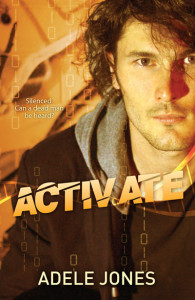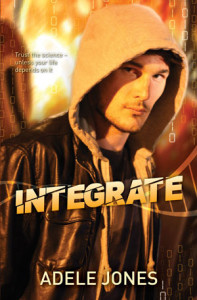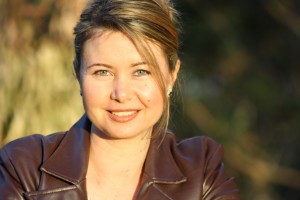This post I have the absolute delight of interviewing urban fantasy author, TP Hogan. TP’s unique work burst into my world three years ago and I’ve been a fan ever since. I know you’re going to love her novels too. Welcome TP!
1. What genre do you write and why?
I like to claim ‘speculative fiction’, it covers a lot – Paranormal, Fantasy, Urban Fantasy, Sci Fi, Steampunk and Horror. It has a lot of wriggle room to be creative. So far I have one Paranormal novel out, and an Urban Fantasy series.
Oh, by the way – just because a lot of people ask ‘what is Urban Fantasy’ – it’s fantastical (with ‘magic’ instead of technology) stories set in ‘our’ world (historical, now or futuristic) rather than a made up world. Think ‘Harry Potter’ or ‘Fallen’.
The why is kind of a long story.
When I started writing I thought I would write romance. At the time, I read a heck of a lot of romance, and it seemed natural. I wrote one romance (still to be published – maybe) and sat down to write the second and realised the ‘boy meets girl’ sorts of stories wasn’t what I wanted to explore. I had to think a long time on the stories I actually liked to read, aside from the romances. The long time was because I’m a voracious reader and there’s a lot I like. Finally I realised I loved the ‘hidden world’ stories – the world in a world, hidden just beneath the surface of what we think is reality…and ‘speculative fiction’ covers that.
Can you tell us a little bit about your previous works and what inspired them?
Sure. Just be warned, asking me to talk about my books could result in an extremely long answer. I’ll try to keep it short (ish).
Shattered 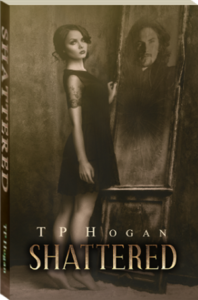
This one is a Paranormal story about a man (Bastian Ashcombe) who is trapped behind the mirrors of Ashcombe manor and the woman (Mattie Holmes) who is trying to break the curse and set him free.
This one was inspired by a Jon English song called ‘Carmilla’. Part of the lyrics are – “…the man in the mirror says you’re my friend…” and as I heard them I thought ‘what if a woman looked into a mirror and saw a man instead of her reflection?’
Nephilim Code
(Nova, Edward, Zeph)
This series is an Urban Fantasy where Nephilim are real, some want to live ‘normal’ lives and some want to rule humanity like they did in the days of old, and both factions are on the hunt for a living Angel.
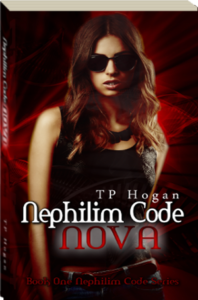 This one was inspired far too many years ago, long before I even thought I could be an Author. As a kid I loved the stories of the Greek and Roman gods (still do, although it’s been years since I’ve read one), and because the two cultures had many gods who were so similar, I thought they must have once been real people. I didn’t think they were real ‘gods’ but people who were special in some way. I just never figured out what was special about them.
This one was inspired far too many years ago, long before I even thought I could be an Author. As a kid I loved the stories of the Greek and Roman gods (still do, although it’s been years since I’ve read one), and because the two cultures had many gods who were so similar, I thought they must have once been real people. I didn’t think they were real ‘gods’ but people who were special in some way. I just never figured out what was special about them.
That was until ‘Nephilim’ came into my sights. In two biblical references (Genesis and Numbers) they are described as the offspring between the sons of man and Angels…and as the ‘men of renown and heroes of old’. That small description triggered the thought ‘what if this is what made the Greek and Roman gods ‘special’…they were Nephilim’. (I’ve since learned that this isn’t an original theory, but I didn’t know that at the time.) 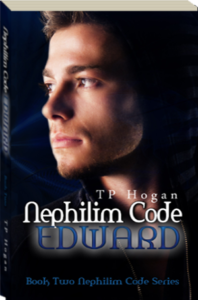
That lead to a little project with my husband (who has a theological background and a strong interest in history and industrial archology) and we tracked a theoretical timeline to see if it was possible for Nephilim to be around in the days of the Greek and Roman gods. As a bit of side-line fun (never denied being a geek) we took the timeline and looked for plausible ways that the Nephilim could end up in Australia.
When we actually succeeded in that (with a bit of poetic licence, I have to admit), it became the inspiration which became the series.
Out of those works, what was your favourite story and why?
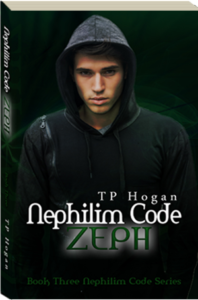 That’s a hard question to answer. It’s on par with trying to decide my favourite child. Each has their parts that I love. Edward (Nephilim Code #2) was my first attempt at writing from a male point of view (and a character who is the complete polar opposite of me), and I’m very proud of how that turned out…but I think I like writing puzzles best. They are the most fun. So that would have to be a decision between Shattered and Zeph (Nephilim Code #3). I think I’ll go with Zeph, that one has a full on ‘treasure hunt’ style adventure in it and the clues were a lot of fun to set up.
That’s a hard question to answer. It’s on par with trying to decide my favourite child. Each has their parts that I love. Edward (Nephilim Code #2) was my first attempt at writing from a male point of view (and a character who is the complete polar opposite of me), and I’m very proud of how that turned out…but I think I like writing puzzles best. They are the most fun. So that would have to be a decision between Shattered and Zeph (Nephilim Code #3). I think I’ll go with Zeph, that one has a full on ‘treasure hunt’ style adventure in it and the clues were a lot of fun to set up.
What has been the most difficult part of your publication (and/or writing) journey?
Believing in myself.
To this day, with four books out and one on the way, I feel like a fraud. Doubts are very good at rearing their ugly heads. I’m not a good writer. I don’t write dark gritty, grab you by the throat and spill your blood books. I get confused when someone starts to talk ‘pronoun cases’ and ‘subject-verb-object sentences’ and I wear out the comma key on my editor’s keyboard. I graduated with an ‘A’ in high school English, but have no further qualifications in writing. No university degree in literature. I sometimes stare at my page as I’m writing and wonder if I’m any good at this at all.
The other day, I finished writing my next book. To get myself out of that world, I went back and re-read the Nephilim Code. I laughed and I cried. And not once did I wince over the story or the characters. I enjoyed it and still can’t believe I wrote it.
I love writing, and I love being in a world hidden within a world, exploring the characters and their journeys. I love fan interactions and having the chance to talk about my books with anyone who stands still long enough. It’s amazing that I get to do something like this, but those doubts can get pretty loud sometimes.
In your writing process, are you a plotter or a pantser or somewhere in between?
A ‘plantser’, maybe? Somewhere in between with a severe bent towards a pantser.
I know from experience that working out a predetermined overview just doesn’t work for me. It causes writer’s block for some reason. I think because I write character driven stories, not plot driven ones.
My most important prep are my character overviews, and they can take months. If I really know my characters, and what drives them then I’ll know how they’ll react to being dumped into the middle of a plot and left to their own devises.
I like to have an overview of the direction I’m going with the story. What the important moments are – I call them my story beats. Mostly that will be in the form of a list or bullet points. I’ll have some research done prior which relate to the story beats, and I’m more than willing to do further research as I go, if needed. While I’m writing I’ll have a file that I’ll add important details to, so I don’t get them lost as I go along. For example, in Nova (Nephilim Code #1), Nova ‘sees’ Nephilim abilities as colours. So I could remember which colour meant which ability, I created a spreadsheet to keep track of them all.
After that, I sit back and let my characters have free reign. So long as they take me in the general direction of my story beats, then it’s all good. Although, sometimes they do take off on their own, and I don’t mind that. If I like where they’re taking me, I’ll adjust the story beats. If I don’t like where they’re taking me I’ll pull them back into line, which most of the time does mean re-writing, but that’s half the fun.
What should we expect next from TP Hogan?
What if Thylacine (Tasmanian Tigers) weren’t extinct, but were shifters trapped in human form? That’s the ‘what if’ question which inspired my next book, Extinct. If all goes to plan, it should be released on 7th October 2017.
Thanks so much for sharing your writing with us, TP. I look forward to reading your newbie!
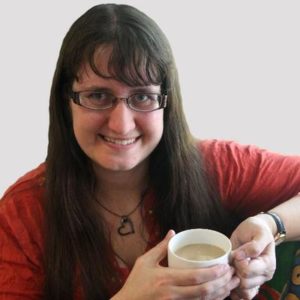 TP Hogan writes speculative fiction. This allows her to escape…and explore hidden worlds, inhabited by the creatures of her imagination, and she invites you to join her in these realms. She has penned such stories as Shattered, Nephilim Code and Extinct.
TP Hogan writes speculative fiction. This allows her to escape…and explore hidden worlds, inhabited by the creatures of her imagination, and she invites you to join her in these realms. She has penned such stories as Shattered, Nephilim Code and Extinct.
When she does step owlishly into reality it is to mess about with baking ideas, play violin, drink copious amounts of coffee and remember that there is a whole other world to explore, in the guise of the beautiful Sunshine Coast Hinterland of Queensland, Australia. She shares her home with her husband and an ever expanding urban backyard garden.
TP Hogan loves talking to readers and writers and you can find to her on Facebook, Twitter and on her website.
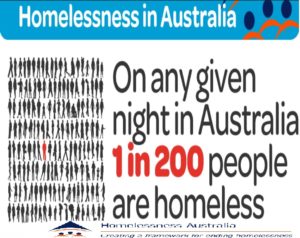 Homelessness is confronting, and was on my radar well before I wrote the scenes in Integrate where Blaine, the teenage hero of the novel, finds himself sleeping rough on the streets. Sometimes homelessness can seem an overwhelming issue. Perhaps this is because of its prevalence and the complexity of circumstances that can lead to someone becoming homeless. And the reality is it can happen easier than one might imagine.
Homelessness is confronting, and was on my radar well before I wrote the scenes in Integrate where Blaine, the teenage hero of the novel, finds himself sleeping rough on the streets. Sometimes homelessness can seem an overwhelming issue. Perhaps this is because of its prevalence and the complexity of circumstances that can lead to someone becoming homeless. And the reality is it can happen easier than one might imagine.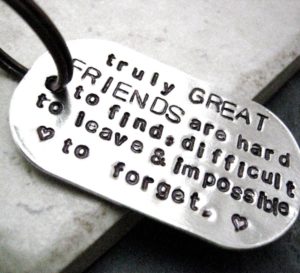 Although our circumstances may differ from Blaine’s, I suspect this grapple with self-worth is a struggle we all face at one time or another. When self-worth is a pivotal factor for achieving healthy, relationship-appropriate levels of intimacy, it can become a vicious cycle of yearning to let people near then hiding our flaws, or pushing them away so they can’t see how imperfect, unworthy and unlovable we really are.
Although our circumstances may differ from Blaine’s, I suspect this grapple with self-worth is a struggle we all face at one time or another. When self-worth is a pivotal factor for achieving healthy, relationship-appropriate levels of intimacy, it can become a vicious cycle of yearning to let people near then hiding our flaws, or pushing them away so they can’t see how imperfect, unworthy and unlovable we really are. Did you know I’m a self-confessed science geek? If you’ve met me, I’m pretty sure you do. In fact, it becomes a little obvious when you read my near-science fiction trilogy (science-based speculative fiction that feels like it could happen now in our modern world) and my current WIP, which is a science fantasy time-slip parallel narrative. What may surprise you is that there have been times I’ve been at reader-writer events and felt like a fish out of water.
Did you know I’m a self-confessed science geek? If you’ve met me, I’m pretty sure you do. In fact, it becomes a little obvious when you read my near-science fiction trilogy (science-based speculative fiction that feels like it could happen now in our modern world) and my current WIP, which is a science fantasy time-slip parallel narrative. What may surprise you is that there have been times I’ve been at reader-writer events and felt like a fish out of water.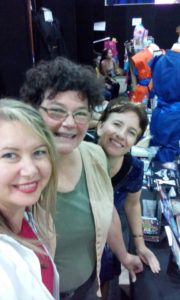

 This one was inspired far too many years ago, long before I even thought I could be an Author. As a kid I loved the stories of the Greek and Roman gods (still do, although it’s been years since I’ve read one), and because the two cultures had many gods who were so similar, I thought they must have once been real people. I didn’t think they were real ‘gods’ but people who were special in some way. I just never figured out what was special about them.
This one was inspired far too many years ago, long before I even thought I could be an Author. As a kid I loved the stories of the Greek and Roman gods (still do, although it’s been years since I’ve read one), and because the two cultures had many gods who were so similar, I thought they must have once been real people. I didn’t think they were real ‘gods’ but people who were special in some way. I just never figured out what was special about them.
 That’s a hard question to answer. It’s on par with trying to decide my favourite child. Each has their parts that I love. Edward (Nephilim Code #2) was my first attempt at writing from a male point of view (and a character who is the complete polar opposite of me), and I’m very proud of how that turned out…but I think I like writing puzzles best. They are the most fun. So that would have to be a decision between Shattered and Zeph (Nephilim Code #3). I think I’ll go with Zeph, that one has a full on ‘treasure hunt’ style adventure in it and the clues were a lot of fun to set up.
That’s a hard question to answer. It’s on par with trying to decide my favourite child. Each has their parts that I love. Edward (Nephilim Code #2) was my first attempt at writing from a male point of view (and a character who is the complete polar opposite of me), and I’m very proud of how that turned out…but I think I like writing puzzles best. They are the most fun. So that would have to be a decision between Shattered and Zeph (Nephilim Code #3). I think I’ll go with Zeph, that one has a full on ‘treasure hunt’ style adventure in it and the clues were a lot of fun to set up. TP Hogan writes speculative fiction. This allows her to escape…and explore hidden worlds, inhabited by the creatures of her imagination, and she invites you to join her in these realms. She has penned such stories as Shattered, Nephilim Code and Extinct.
TP Hogan writes speculative fiction. This allows her to escape…and explore hidden worlds, inhabited by the creatures of her imagination, and she invites you to join her in these realms. She has penned such stories as Shattered, Nephilim Code and Extinct.